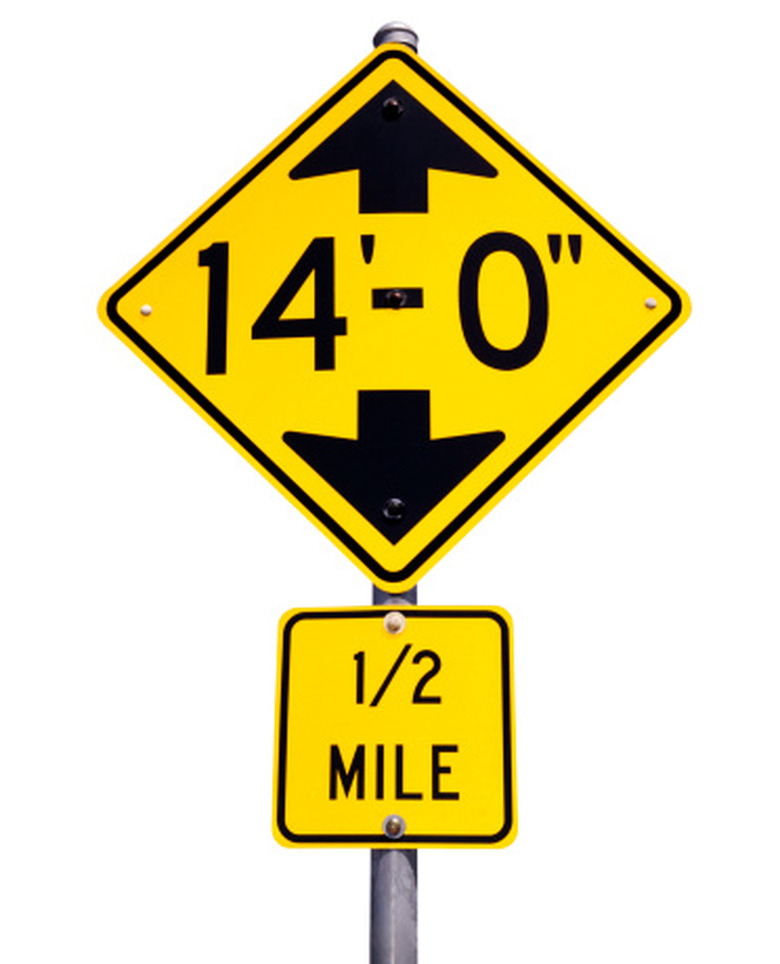What Are Statute Miles?
Miles are units of length, measuring 5,280 feet or eight furlongs, commonly used in the United States and Great Britain. A statute mile is the name given to the definitive measurement used in Britain and America, where the miles referred to on roads signs or maps for example are statute miles. There are slight differences between the statute, international and nautical mile.
Origins of the Mile
Origins of the Mile
The word mile stems from the Latin word mille, which means 1,000. The Roman mile was 1,000 paces. As the Romans defined a pace as two steps, left and right, it meant a total of 2,000 steps. There are obvious problems with using inconsistent measurements such as steps, which can vary person to person, and eventually a set distance needed to be decided upon. In an act of Parliament, Queen Elizabeth I decreed that a mile was to be eight furlongs, 80 chains, 320 rods [1], 1,760 yards or 5,280 feet. The length was statutorily decided upon in 1592, hence the name statute mile.
Statute vs. International Mile
Statute vs. International Mile
As our ability to measure more and more precisely grew, it became recognized that different countries were using slightly different measurements for feet and yards, and as yards were used to measure a mile, slightly different mile lengths were being used. Various countries agreed to an international measurement of the foot to be 30.48 centimeters, making the international mile 1,609.344 meters exactly (to confuse the issue this can also be called an international statute mile). The U.S. statute mile, also called a survey mile, measures 1609.3472 meters, a difference of 3.2 millimeters (1/8 inch) per mile. This is due to a usage of the equation of a survey foot equaling 1,200/3,937 meters rather than 30.48 centimeters.
Nautical vs. Statute Mile
Nautical vs. Statute Mile
Nautical miles were originally worked out differently to miles, due to the nature of sea travel. They were measured using the arc of the Earth, and were 1 percent of 1 degree of the Earth's curve. As the curve of the Earth isn't completely even and spherical, this meant that in some areas, a nautical mile was larger than in others. In 1954, America agreed that the international nautical mile of 1,852 meters would be adopted.
Abbreviation of Mile
Abbreviation of Mile
The official abbreviation of the statutory mile and survey mile is "mi." However, despite the best efforts of the National Institute of Standards and Technology, it is rarely seen outside of its publications. Most common abbreviations, such as miles per gallon (mpg) or miles per hour (mph), tend to be denoted by just the letter "m." Even road signs either say miles or use just the letter "m."
Cite This Article
MLA
Jones, Louise. "What Are Statute Miles?" sciencing.com, https://www.sciencing.com/statute-miles-8358166/. 24 April 2017.
APA
Jones, Louise. (2017, April 24). What Are Statute Miles?. sciencing.com. Retrieved from https://www.sciencing.com/statute-miles-8358166/
Chicago
Jones, Louise. What Are Statute Miles? last modified March 24, 2022. https://www.sciencing.com/statute-miles-8358166/
